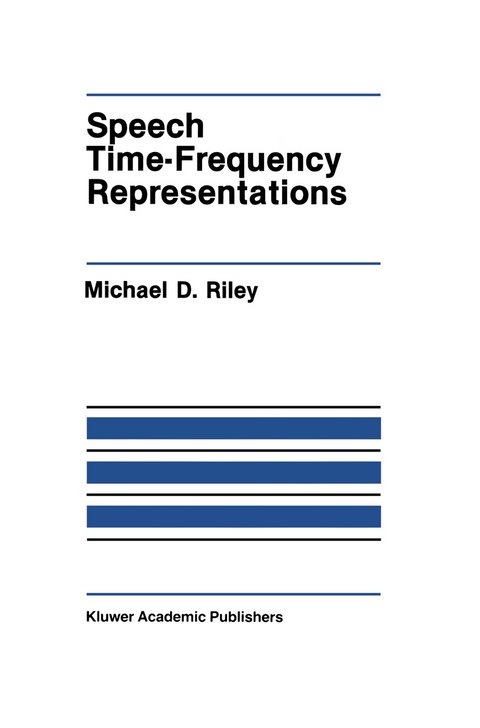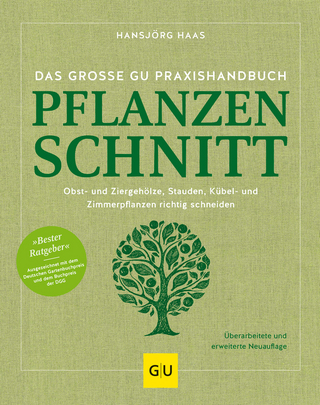
Speech Time-Frequency Representations
Springer-Verlag New York Inc.
978-1-4612-8417-8 (ISBN)
1.1. Steps in the initial auditory processing. 4 2 THE TIME-FREQUENCY ENERGY REPRESENTATION 2.1. Short-time spectrum of a steady-state Iii. 9 2.2. Smoothed short-time spectra. 9 2.3. Short-time spectra of linear chirps. 13 2.4. Short-time spectra of /w /'s. 15 2.5. Wide band spectrograms of /w /'s. 16 Spectrograms of rapid formant motion. 2.6. 17 2.7. Wigner distribution and spectrogram. 21 2.8. Wigner distribution and spectrogram of cos wot. 23 2.9. Concentration ellipses for transform kernels. 28 2.10. Concentration ellipses for complementary kernels. 42 42 2.11. Directional transforms for a linear chirp. 47 2.12. Spectrograms of /wioi/ with different window sizes. 2.13. Wigner distribution of /wioi/. 49 2.14. Time-frequency autocorrelation function of /wioi/. 49 2.15. Gaussian transform of Iwioi/. 50 2.16. Directional transforms of lwioi/. 52 3 TIME-FREQUENCY FILTERING 3.1. Recovering the transfer function by filtering. 57 3.2. Estimating 'aliased' transfer function. 61 3.3. T-F autocorrelation function of an impulse train. 70 3.4. T-F autocorrelation function of LTI filter output. 70 Windowing recovers transfer function. 3.5. 72 3.6. Shearing the time-frequency autocorrelation function. 75 3.7. T-F autocorrelation function for FM filter. 76 3.8. T-F autocorrelation function of FM filter output. 77 3.9. Windowing recovers transfer function. 79 4 THE SCHEMATIC SPECTROGRAM Problems with pole-fitting approach.
1 Introduction.- 2 The Time-Frequency Energy Representation.- 2.1. The stationary case.- 2.2. The quasi-stationary case.- 2.3. Non-stationarity.- 2.4. Joint time-frequency representations.- 2.5. Design criteria for time-frequency representations.- 2.6. Relations among the design criteria.- 2.7. Satisfying the design criteria.- 2.8. Directional time-frequency transforms.- 2.9. A speech example.- 3 Time-Frequency Filtering.- 3.1. The stationary case.- 3.2. Non-stationary vocal tract.- 3.3. Time-frequency filtering.- 3.4. The stationary case — re-examined.- 3.5. Linearly varying modulation frequency.- 3.6. The quasi-stationary case.- 3.7. Smoothly varying modulation frequency.- 3.8. The vocal tract transfer function.- 3.9. The transmission channel.- 3.10. The excitation.- 4 The Schematic Spectrogram.- 4.1. Rationale.- 4.2. Spectral Peaks.- 4.3. Time-frequency ridges — non-directional kernel.- 4.4. Time-frequency ridges — directional kernel.- 4.5. Signal detection and ridge identification.- 4.6. Continuity and grouping.- 4.7. A perspective.- 5 A Catalog of Examples.- 5.1. Some general examples.- 5.2. Liquids and glides.- 5.3. Nasalized vowels.- 5.4. Consonant-vowel transitions.- 5.5. Female speech.- 5.6. Transmission channel effects.- References.
| Reihe/Serie | The Springer International Series in Engineering and Computer Science ; 63 |
|---|---|
| Zusatzinfo | XIV, 160 p. |
| Verlagsort | New York, NY |
| Sprache | englisch |
| Maße | 155 x 235 mm |
| Themenwelt | Sachbuch/Ratgeber ► Natur / Technik ► Garten |
| Mathematik / Informatik ► Informatik | |
| Technik ► Elektrotechnik / Energietechnik | |
| Technik ► Nachrichtentechnik | |
| ISBN-10 | 1-4612-8417-1 / 1461284171 |
| ISBN-13 | 978-1-4612-8417-8 / 9781461284178 |
| Zustand | Neuware |
| Haben Sie eine Frage zum Produkt? |
aus dem Bereich


